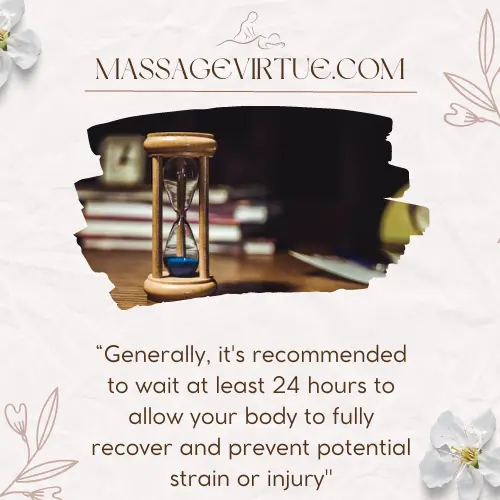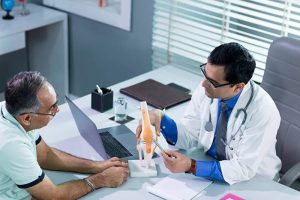Thai massage, a holistic and rejuvenating practice, offers a profound blend of stretching and acupressure to relax both body and mind.
But what happens after your Thai massage session? Can you exercise after a Thai massage, or should you tread with caution?
In this article, we’ll explore the intricacies of post-Thai massage exercise and provide valuable insights on how to best care for your body. Let’s dive in.
Can You Work Out After a Thai Massage?
After a Thai massage, it’s advisable to give your body a break. Engaging in a vigorous workout immediately after may not be the best course of action because it can be counterproductive to your Thai massage, involves a high risk of injury, and also your body needs some rest.
Is It Safe To Exercise After a Thai Massage?
Thai massage, when performed by a skilled practitioner, is generally safe. However, there are crucial considerations when it comes to exercising right after your session.
3 Reasons To Avoid Exercise After Thai Massage
1. Counterproductive to Your Thai Massage
Your Thai massage session aims to promote relaxation, release muscle tension, and improve energy flow. Exercising vigorously immediately afterward can negate these benefits and lead to muscle strain.
Thai massage is renowned for its ability to increase flexibility, enhance circulation, and promote relaxation. However, engaging in strenuous exercise immediately afterward can counteract these therapeutic effects.

While your muscles are in a relaxed state, intense physical activity can lead to overstretching or straining, potentially causing injury.
Therefore, it’s best to allow your body time to transition gradually from a state of relaxation to activity.
2. Risk of Injury
Working out after a Thai massage may put you at a higher risk of injury, as your muscles and joints are in a highly relaxed state. It’s essential to allow them time to regain their normal tension.
During a Thai massage, your therapist uses a combination of acupressure and yoga-like stretches to target specific muscles and energy lines. These techniques release built-up tension and promote a sense of calm and well-being.
However, immediately subjecting your muscles to the stress of intense exercise can result in strain or injury. Your muscles may not respond as efficiently to the demands of exercise when they are still in a relaxed state.
3. Your Body Needs Rest
Thai massage provides your body with much-needed rest and rejuvenation. Rushing into exercise can disrupt this recovery process, potentially leaving you fatigued and less able to perform optimally.
Thai massage is not just a physical experience; it also offers mental and emotional relaxation. It helps reduce stress and anxiety, allowing your body to enter a state of deep relaxation.
This relaxation is essential for the body’s natural healing processes to occur.

Jumping into strenuous exercise immediately after your massage can negate these calming effects and potentially leave you feeling fatigued or overwhelmed.
3 Things To Do After a Thai Massage?
While immediate strenuous exercise is discouraged, there are several beneficial activities you can engage in after your Thai massage.
1. Drink Water
Rehydrate your body by drinking plenty of water. Thai massage can release toxins, and proper hydration helps flush them out.
One of the effects of Thai massage is improved circulation. This enhanced blood flow can aid in the removal of metabolic waste products from your muscles.
Drinking water helps support this process by ensuring that your kidneys can effectively filter and eliminate waste from your bloodstream.
2. Take a Warm Bath or Hot Shower
A warm bath or shower can further relax your muscles and enhance the soothing effects of your Thai massage.
A warm bath or shower can provide additional relaxation and help alleviate any residual muscle tension. The heat can help your muscles further unwind, promoting a sense of calm and well-being.

This practice can be particularly beneficial if your Thai massage session is intense or if you experience any muscle soreness afterward.
3. Avoid Heavy Meals and Unhealthy Food
Opt for light, nutritious meals after your massage. Heavy or unhealthy foods may hinder the digestive process and reduce the benefits of your session.
After a Thai massage, your body may feel lighter and more balanced. It’s advisable to continue this sense of lightness by consuming light, nourishing meals.
Heavy or unhealthy foods can make you feel sluggish and counteract the revitalizing effects of your massage.
How Long Should You Wait For Exercise After a Thai Massage?
The ideal waiting period before exercising post-Thai massage can vary from person to person.
Generally, it’s recommended to wait at least 24 hours to allow your body to fully recover and prevent potential strain or injury.
Listen to your body and consult with your massage therapist for personalized guidance.

The time you should wait before engaging in vigorous exercise after a Thai massage can vary depending on several factors, including your individual physical condition, the intensity of the massage, and your overall health.
It’s essential to pay attention to your body’s signals and consult with your massage therapist or healthcare provider for personalized guidance.
Can You Get a Thai Massage After A Workout?
Yes, getting a Thai massage after a workout can be highly beneficial. It can aid in muscle recovery, alleviate tension, and enhance flexibility.
However, it’s essential to ensure you’re not too fatigued or dehydrated before your massage session.
Getting a Thai massage after a workout can be an excellent way to support your muscle recovery and enhance the benefits of your exercise routine.
Here are a few key reasons why combining Thai massage with post-workout recovery can be advantageous:
- Improved Muscle Recovery: After a strenuous workout, your muscles may experience soreness and tension. Thai massage can target specific muscle groups, helping to alleviate muscle soreness and promote faster recovery.
- Enhanced Flexibility: Exercise can sometimes lead to tight muscles. Thai massage’s stretching techniques can help improve your flexibility, allowing for a greater range of motion and reduced risk of injury.
- Stress Reduction: Intense workouts can place physical and mental stress on your body. Thai massage’s relaxing effects can help alleviate stress and promote a sense of calm and well-being.
- Improved Circulation: Exercise increases blood flow, and Thai massage can further enhance circulation. This improved circulation can aid in the delivery of oxygen and nutrients to your muscles, supporting their recovery.
However, it’s crucial to consider your physical condition before scheduling a Thai massage after a workout.
Ensure you are not overly fatigued or dehydrated, as this could affect your body’s ability to fully benefit from the massage. Hydrate adequately, and allow some time to cool down and rest before your massage session.
Conclusion:
In the delicate balance of wellness, the aftermath of a Thai massage demands attention and care. Allow your body the time it needs to absorb the therapeutic benefits of your session.
Engage in gentle, nurturing activities, and when the time is right, return to your exercise routine with renewed vigor.
By respecting your body’s signals, you’ll continue to reap the rewards of both Thai massage and physical fitness on your journey to well-being.
Remember that your body is a dynamic and responsive system. What works best for you may vary from someone else’s experience.
Listen to your body’s cues, communicate with your massage therapist, and make choices that align with your overall health and well-being goals.
Whether it’s through exercise, massage, or other forms of self-care, nurturing your body and mind is the key to living a balanced and fulfilling life.

